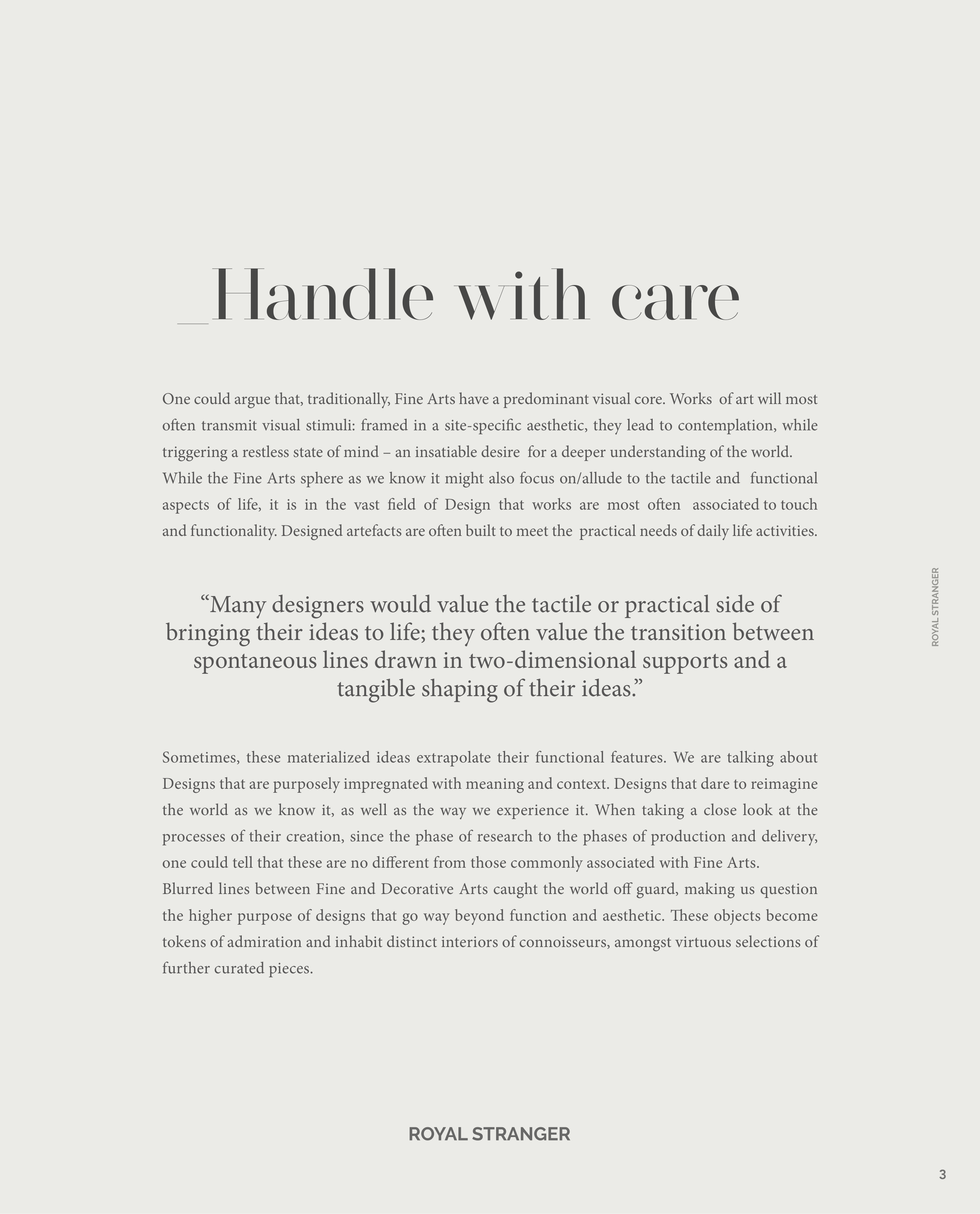3
_Handle with care
One could argue that, traditionally, Fine Arts have a predominant visual core. Works of art will most
often transmit visual stimuli: framed in a site-specific aesthetic, they lead to contemplation, while
triggering a restless state of mind – an insatiable desire for a deeper understanding of the world.
While the Fine Arts sphere as we know it might also focus on/allude to the tactile and functional
aspects of life, it is in the vast field of Design that works are most often associated to touch
and functionality. Designed artefacts are often built to meet the practical needs of daily life activities.
Sometimes, these materialized ideas extrapolate their functional features. We are talking about
Designs that are purposely impregnated with meaning and context. Designs that dare to reimagine
the world as we know it, as well as the way we experience it. When taking a close look at the
processes of their creation, since the phase of research to the phases of production and delivery,
one could tell that these are no different from those commonly associated with Fine Arts.
Blurred lines between Fine and Decorative Arts caught the world off guard, making us question
the higher purpose of designs that go way beyond function and aesthetic. These objects become
tokens of admiration and inhabit distinct interiors of connoisseurs, amongst virtuous selections of
further curated pieces.
“Many designers would value the tactile or practical side of
bringing their ideas to life; they often value the transition between
spontaneous lines drawn in two-dimensional supports and a
tangible shaping of their ideas.’’


